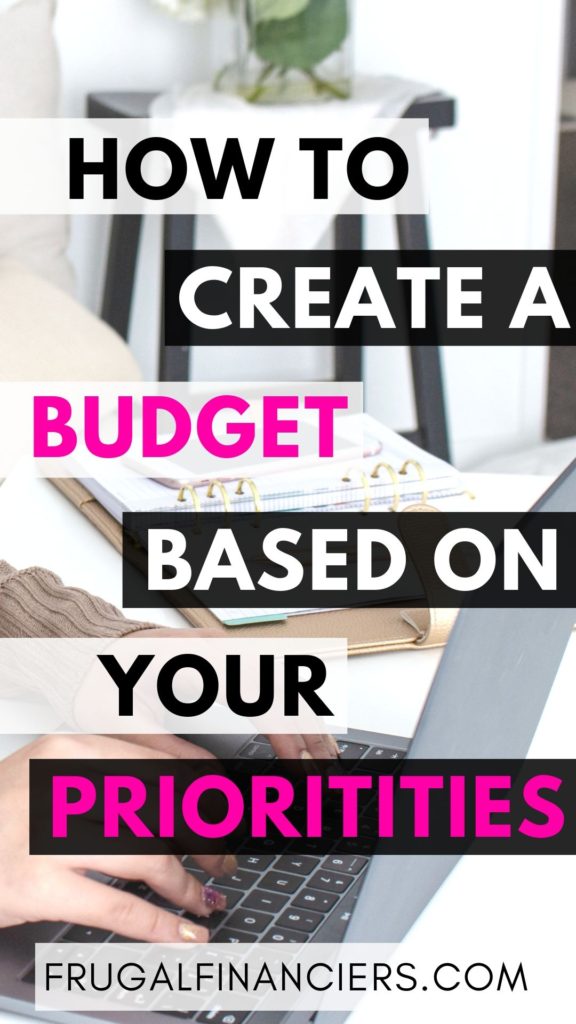The priority-based budget is a great alternative to the normal budget set-up.
There are so many different types of budgets out there.
Really, all budgets are just worksheets to help you think about your money.
You earn a certain amount and you spend a certain amount.
If you have some left over you can invest it or pay off debt.
So, you have these goals.
You want to pay off your debt or maybe save for a house or even invest money for retirement.
BUT …
Your friends are also going out this weekend.
Or, you want to buy a new smart phone.
How do you balance the now and the later?
You create a priority-based budget.
A priority-based budget is all about walking through your expenses and creating a priority for pools of money.
In this post, we’ll discuss the steps of creating a priority-based budget.
Here are the steps:
- Gathering Transactions
- Categorizing Transactions
- Reviewing Transactions
- Figuring Out Your Priorities
- Allocating Money to Your Priorities
- Fine-Tuning Your Priority-Based Budget
Gathering Financial Transactions
As with all of our budgets, we recommend you download your last few months of transactions.
Unless you’re super aware of your spending, this is likely the best way to understand were you’re spending money.
If you need help with the process of downloading and categorizing your transactions, check out our post:
How to Categorize Your Expenses
Categorizing Transactions
Now that you have all of your transactions, it’s time to categorize them.
Start, by categorizing all of your expenses into essential and non-essential.
Then, categorize the non-essential expenses by similar expenses like eating out, clothing, entertainment, et cetera.
If you’re using a quarterly budget, add up all of the expenses in each category for the last three months.
For monthly budgets, you want to do the same but for each month instead.
Reviewing Transactions
Up to this point, the budget creation was relatively the same as compared with other budgets.
Here is where it changes.
In your budget, whether it be on paper or on the computer, start with your income at the top.
Use either the last three months or the last quarter.
Here is an example for both:

Now, it’s time to put your essential expenses.
Why are these first?
Because, they are always, ALWAYS your first priority.
You have to pay them if you want housing, utilities and basic food.
Subtract your essential expenses from your after tax income.
You need to estimate your income and essential expenses.
We use averages or the last time period to keep it simple.
Here is what the example looks like:

Figuring Out Your Priorities
Now, that you have the net of income and essential expenses you know how much money you really have to spend.
Those essential expenses are usually fixed and hard to change.
Now, it’s time to make a list of everything you have and could spend your money on in your life.
From all the eating out to all the money you could be saving or using to pay off debt.
Once you have the list, you should prioritize all of the different categories from least to greatest priority.
Don’t worry, you still going to have a balance between enjoying now and enjoying the future.
On to the next step.
Allocating Money to Your Priorities
Take your first priority, your number 1 on the list.
Let’s say that it’s paying off debt.
What’s the least amount of debt that you would like to pay off each month?
Least?
Yes, the smallest amount of money you’d be comfortable putting towards your debt.
Put this amount as the first priority in your budget with the amount for the next month or quarter.
Now, move on to the next priority.
Let’s say its entertainment which includes going out with people as well as television subscriptions.
You already know around how much you spend, but what is the least amount you feel comfortable spending?
Put down the amount below the last priority.
Here is an example:

Keeping doing this until you’ve gone through your list of priorities.
Do you still have money left over?
If you do, you should start at the top of the list again.
It’s all about creating minimum amounts for each of your priorities and then increasing your spending targets for the highest priorities.
But, you want to create a new line for the each priority spending amount.
Here is an example:

When you keep priorities separated by amounts of money, it is easier to handle emergency and unexpected expenses.
If you have a $500 unexpected expense, you simply start from the bottom of your budget until you get to $500.
Fine-Tuning Your Priority-Based Budget
What if you ran out of money before you reached the end of your priorities?
Or, maybe you’re reviewing the budget amount and you no longer feel comfortable with an amount.
This is a great time to go back and review each of your priorities and the amounts.
The more experience you have with a priority-based budget, the better you’ll know what you
The goal is not prioritize you spending but actually prioritize each dollar.
In the example, the first $500 is going to go towards debt.
Then, the next $200 is going to go towards entertainment.
You may end up actually paying off $600 of debt but you’ve prioritized other expenses before that additional $100.
When you’re fine-tuning, try to think of it like where do I want to spend my first $100 and where do I want to spend my next $100.
This should help to create a balance between achieving you financial goals but also enjoying you money now too.
Final Thoughts
The priority-based budget is a different approach to budgeting.
Remember, creating a budget is really about creating a worksheet to get you thinking about money.
If you’re having trouble budgeting for both your financial goals as well as enjoying your hard-earned money, a priority-based budget may be right for you.
A priority-based budget is all about allocating your money to each of your priorities.
It’s not about just saving money or just going out to eat but striking a balance between both.
Here are the steps again to help you build your priority-based budget:
- Gathering Transactions
- Categorizing Transactions
- Reviewing Transactions
- Figuring Out Your Priorities
- Allocating Money to Your Priorities
- Fine-Tuning Your Priority-Based Budget
We hope this alternative approach to budgeting helps you achieve your financial goals but also makes you feel happy and comfortable with your spending habits.





Leave a Reply
Your email is safe with us.
You must be logged in to post a comment.